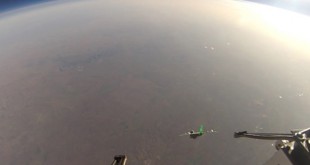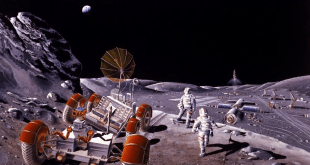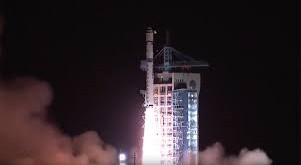Introduction Cryptocurrency has revolutionized the world of finance with its decentralized nature and the promise of financial freedom. However, the growing popularity of cryptocurrencies has also attracted cyber threats and security concerns. As a response to these challenges, the world of cryptocurrency mining is undergoing a transformation with the integration …
Read More »TimeLine Layout
February, 2024
-
6 February
China’s Dominance in Near Space: Unleashing a Swarm of Drones
Introduction In the ever-evolving landscape of modern warfare, China has been making remarkable strides, particularly in the near-space domain. Situational awareness of potential hostile targets and of friendly forces is considered to be a key component in obtaining and sustaining military superiority over adversaries. Military requires persistent ISR 24 hours …
Read More » -
5 February
Hacking of Electronic Voting Machines: A Threat to Democracy and the Need for a Secure Voting System
Introduction In a world increasingly driven by technology, electronic voting machines (EVMs) have become a critical component of modern democratic processes. These machines offer the promise of convenience, efficiency, and accuracy in counting votes. However, they also present a significant challenge: the potential for hacking and tampering, which threatens the …
Read More » -
4 February
Powering the Future of Lunar Exploration: Energy Technologies for Moon Bases and Resource Utilization
Introduction In the midst of the global space race, the Moon has emerged as a pivotal destination for countries and private enterprises. The allure lies in its potential for establishing Moon bases, harnessing its mineral resources, and tapping into the vast reserves of helium-3 for future nuclear fusion power plants. …
Read More » -
4 February
How AI Will Facilitate Future Scientific Breakthroughs and Innovation
Introduction Artificial Intelligence (AI) has already revolutionized various industries, from healthcare to finance, and now it’s poised to transform the world of scientific research and innovation. With its remarkable capacity to process massive datasets, identify patterns, and generate insights, AI is becoming an invaluable tool for scientists across disciplines. In …
Read More » -
3 February
Navigating the Law Enforcement Software Market: Trends and Insights
Introduction In today’s rapidly evolving world, law enforcement agencies face an increasing need for efficient, data-driven solutions to tackle complex challenges. The law enforcement software market has emerged as a crucial ally, offering innovative tools that empower agencies to better serve and protect their communities. In this article, we’ll delve …
Read More » -
2 February
Cybersecurity Incident Response and Digital Forensics: Navigating the Digital Battlefield
In today’s interconnected world, cybersecurity is a paramount concern for individuals, organizations, and governments alike. With the ever-increasing sophistication of cyber threats, it’s not a matter of if an incident will occur, but when. When the digital defenses are breached, a robust cybersecurity incident response plan coupled with digital forensics …
Read More » -
1 February
DARPA’s SynQuaNon Disruption Opportunity: Unleashing the Potential of Synthetic Quantum Nanostructures
Electronic metamaterials and nanostructures represent innovative classes of engineered materials and structures designed at the nanoscale level to exhibit unique and tailored electronic properties. These materials differ from naturally occurring substances as they are precisely designed to manipulate and enhance the behavior of electrons in a controlled manner. Novel electronic …
Read More » -
1 February
China’s ‘Space Silk Road’ Strategy: Elevating Its Global Space Power Status
Introduction China has been steadily and ambitiously advancing its presence in the global space arena, and its ‘Space Silk Road’ strategy plays a pivotal role in this ascent. China’s relentless pursuit of becoming a global space power has been notably characterized by its ‘Space Silk Road’ strategy, an ambitious plan …
Read More »
January, 2024
-
31 January
Space Debris Cleaning Technologies: A Double-Edged Sword in Orbit
Introduction As humanity’s presence in space continues to expand, so does the problem of space debris. Thousands of defunct satellites, spent rocket stages, and other discarded objects orbiting Earth pose a significant hazard to both active spacecraft and future space missions. To combat this growing threat, scientists and engineers have …
Read More »
 International Defense Security & Technology Your trusted Source for News, Research and Analysis
International Defense Security & Technology Your trusted Source for News, Research and Analysis



